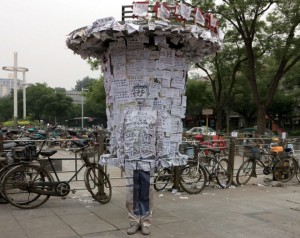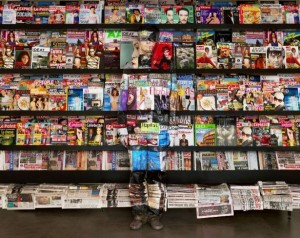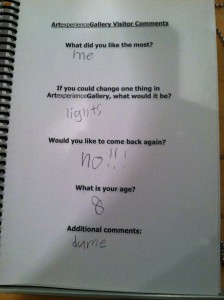Jeff Johns
Interview Conducted 1/23/15 by Meggan Laxalt Mackey
I chose to interview Jeff Johns as a public history professional because of his diverse public history career. Jeff used the words “interdisciplinary, intergenerational, and creative” throughout our interview, but “collaboration” was his main message. He also reminded me that rough spots will always occur in anyone’s career, so it’s important to keep moving forward, learn from the experience(s), and don’t look back. Jeff also credited mentors and colleagues from previous workplaces who helped him choose – and survive – this field. It was refreshing to hear Jeff speak so highly of those he worked with to bring public history to others, and those who helped shape his public history career: we never do this alone. That was my final take-home message from Jeff.
JEFF’S EXPERIENCES
• Education
Jeff is an Idaho native, and chose Boise State University at a time that public history was beginning to gain ground nationally. He graduated with a BA in History in 1998, and earned his MA in Museum Studies from the University of Nebraska, Lincoln, in 2001.
• Basque Museum & Cultural Center, Boise, Idaho. Curator of Collections and Exhibitions, 2001-2006.
Jeff walked out of grad school and into this job. He upgraded this small cultural museum’s collections by implementing an electronic system that digitized artifacts, archives, audio and photo collections, which made it a lot easier for users to conduct research. He worked with the primary museum space gallery, including temperature and lighting filtration, exhibit design, and special events. Jeff’s primary accomplishment was as lead curator of the “Cyrus Jacobs-Uberuaga Boardinghouse,” an ambitious, grant-funded funded historic preservation project of the small boardinghouse on Boise’s Grove Street, with period-authentic recreation inside of a boardinghouse and family residence. He was responsible for historical research; conservation; curatorial oversight; researching and acquiring furnishings, wallpapers, lighting, props, heat/light, security system, interpretation; and community outreach. The CJU project included community involvement with the archaeological dig on museum grounds, where locals and passers-by were able to learn about history and archaeology “real-time.” Jeff coordinated with SHPO and archaeologists on the dig and structural components of the house restoration, The CJU Project was a Boise masterpiece, and the adjacent museum’s attendance, education programs, language classes, and gift shop sales expanded greatly. This was a great first curatorial for Jeff. Each aspect of this position was complex, but an opportunity to gain experience.
• American Airlines’ C.R. Smith Museum (CRSM), Fort Worth, Texas. Curator and Corporate Historian, 2006-2009.
In 2006, American was the largest and oldest U.S. airline, with the biggest training center in the world and many aircraft on-site, but it had an outdated aviation museum. After 911, the airlines placed security measures on museum grounds, and its 75,000 visitors per year plummeted to 9,000. American Airlines’ response was to invest $1.5 million in a complete museum make-over. This position was much more complex than the Basque curation job, with a huge budget, a supervisory role, and a requirement to learn interactive audio and digital skills, and digital film remastering. When Jeff opened the new “An American Journey” museum experience, it was a wild success. Its 7,000 square feet of exhibit space was filled with participatory elements directed mostly at children, interactive AV stations, fresh graphics and interpretive panels, and an IMAX- style theatre in the round (110 seats) with a newly edited, digitized film, “Spirit of American.” As American’s corporate historian, he managed the museum’s artifact collections, archives, and films. “Life-long Learner” programs were directed at multiple age groups, including seniors, and family/kid programs, with multidisciplinary art, science, and history experiences. CRSM engaged in social media efforts, TV marketing, and various tourist industry tactics to further publicize the revamped museum. The net result was that by 2009, CRSM visitorship was on its way upward once again, with 50,000 visitors a year.
Mayor’s Aerospace Museum Task Force. Member, 2007-2009.
Due to the great success at American Airlines, the City of Fort Worth began to dream big. Jeff served on the Mayor’s Aerospace Museum Task Force, a committee to determine the feasibility of developing a world-class aerospace museum. The city hired a consultant to work the committee to develop a master strategic plan, and by 2009 Jeff was named the Fort Worth Air & Space Museum Executive Director.
Fort Worth Air & Space Museum. Executive Director, 2009-2011.
Jeff’s new job was to plan, design, and fabricate a $3-million-dollar, 10,000-square-foot exhibition about the evolution of the aerospace industry of North Texas. It was thought that this “test” exhibit would whet the public’s appetite, and encourage further funding of a $115-million-dollar museum that would see one million visitors a year. The exhibit, “When Dreams Defy Gravity,” included an experimental science lab, aircraft flight simulators, creative art stations, HD theatre, and a B36 plane communications ride. Participatory elements included hands-on stations to “out-gun” Rosie the Riveter, a Noise Pollution Lab to compare F18 engine noise to that of a B757, and other cool things. The Museum Board consulting firm and the city advocated for the feasibility of the larger museum development, but the economic climate was not right. Key potential funders withdrew their financial support, and the city lost its pledged investment. The additional resources needed to move further were not realized, and the entire project was scrapped. Careers can have unfortunate occurrences, and this truly was a major heartbreak for Jeff.
Minnesota Historical Society’s Forest History Center. Historical Site Director, 2011-present.
This unique 170-acre environmental history and learning center is in Minnesota’s Northwoods. It has public history programs, living history tours, and field trips, a Visitor Center, classroom, replica logging camp, library, theatre, gift shop, and a1930s U.S. Forest Service cabin. The innovative in-and-outdoors “Into the Woods” program targets Native American Tribes and Norwegian groups, with art/artisan/writing workshops, dogsledding, Shakespeare plays and concerts, and wildlife/bird presentations. To pull this off, the FHC collaborated with locals and state/federal/city organizations. The FHC realized a 36% increase in overall attendance, a 162% increase from this site for membership in the Minnesota Historical Society, and a $50K appropriation from the State Legislature. The FHC plans to experiment more with adventure-based, multidisciplinary environmental learning experiences that tie history to the outdoors.
JEFF’S WORDS OF WISDOM
On what type of education or experience should one have for public history
“During my academic pursuits I learned of the ideals and philosophies of public history and museology. Yet learning how to increase the likelihood of success with audiences and developing/delivering projects out in the field has taken me on an odyssey that often seems quite out of sync with those ideals and philosophies. While I think my education was valuable, I believe my real education has taken place in trying to survive professionally during the last 14 years. … Savor the journey and then go and tackle some amazing projects.”
On why we need to do public history differently
In the U.S., less than 10% of total museum-going audience attend history museums.
Most visitors go only once — or return with relatives when visiting.
Many experiences are boring, static, didactic, text-heavy labels, with no engagement because there is no personal connections.
History is competing with these: more engaging, immersive and technology-based:
1. Science/STEM; 2. Art; 3. Zoos and Aquariums. To change this: make history relevant and exciting to visitors.
– Keep current with technology
– Develop a diverse “customer base” (locals AND other visitors)
– Do community outreach programs
– Make it interdisciplinary and intergenerational
– Work in non-profit world: budgets, small circles, groupthink
– Boards of Director/manager/staff relationships with the community
– Integrating collections and archives appropriately
– Assess reactions from visitors honestly – be willing to change if didn’t work
– Public access: transportation, can your visitor afford it? physical/mental challenges
On defeat, frustration, the need to move forward
“I had to admit defeat occasionally – this paved way for later successful outcomes for entire projects.”
On doing history for the public
“Become an opportunist. Trust your gut – your intuition. Try things out to see if they work – if not figure out why – and try something else, or the same again over time.”
“Never ask for permission – ask for forgiveness later.”
“Push it…gotta push the envelope. We can’t afford to be traditional anymore. Use educational programming everywhere – all places.”
“Be diverse. Offer unique and different ways to learn. Must be inspiring and transformative. Constantly adapt to change and create change…offer what the public wants, need to find ways to support them. With today’s instant information, don’t over-analyze issues, just focus on experiences.”
“Outreach is critical – advertise and connect with communities. You must have public buy-in and participation. Cross-marketing, sponsors, creative outreach campaigns.”
“There is high competition for ‘entertainment dollars.’ Make history more like entertainment – engaging others, participation, interactive, engaging. Think out of the box with creativity. Multi-disciplinary: use everything to support history – and active!
art, music, science, plays, chemistry, match, ecology, energy, biology, wildlife, play, outdoor experiences, sensory. Try to have something for everyone, and change things up, be new and interesting.”
“How does the public perceive history and historians? That is key to visitorship. You must have ownership in one’s community, or if a visitor, ownership in the issues.”
On staffs and staffing, partner collaboration
“Leverage staff diversity and collaboration…create synergy with others, use frequent communication, no withholding.”
“Challenge of competent staff – finding people to do a good job. Senior staffs now are often 20+ yrs – don’t like change, not innovative, out of energy, but younger staff can be too confident, lacking in people skills and communication.”
“Be careful with investments and contracting… The public often does not want polish, they just want an experience, education. And remember…technology is good, but access, wi-fi, economics, who can use technology is still an issue in many areas and with some demographics.”
“Focus on nontraditional groups: vision impaired, hearing impaired, refugee cultures, languages, dyslexia…good history can be transformative for them.”
On strategic planning
“After three major efforts, it is best to plan minimally so adjustments can be made. Take risks and test your ideas out first – then plunge. Don’t pay high dollars for consultant firms: plans often sit on shelves, take too long, and are too costly to implement, mostly because there are good chances those advisors are people outside your spectrum who do not know truly your audience or benefactors.”



